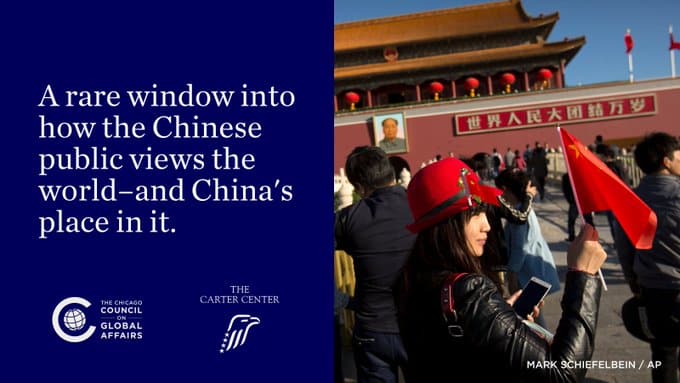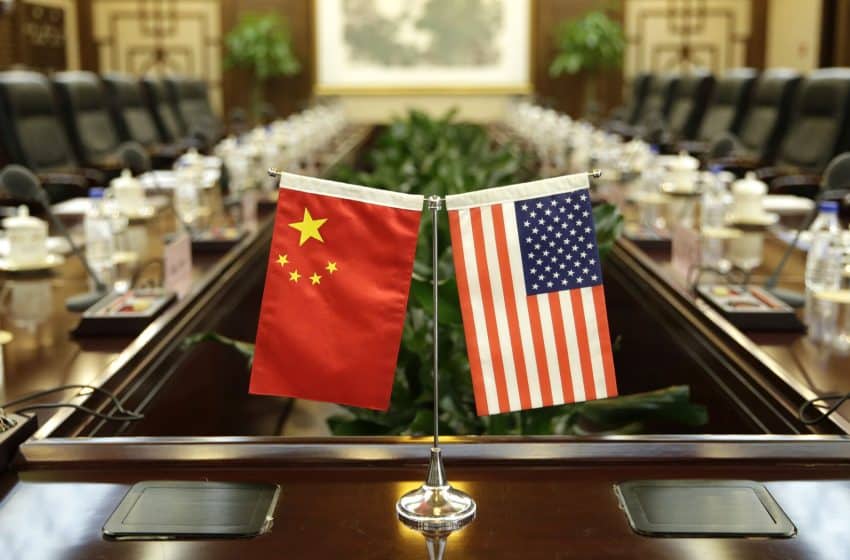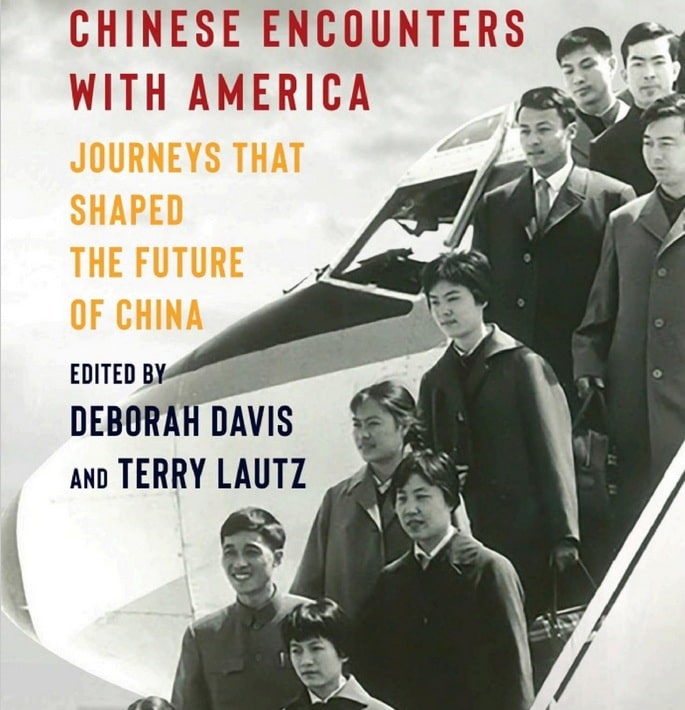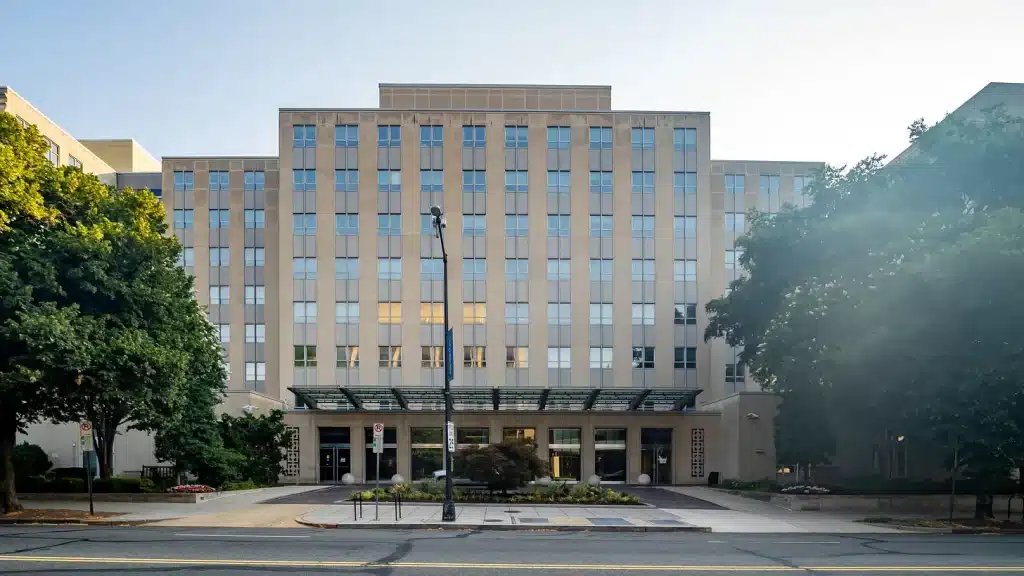Behind Closed Doors: U.S. Tactics in Backroom Diplomacy with China
- Analysis
 Jiachen Shi
Jiachen Shi- 06/12/2024
- 0
[Editor’s Note: Jiachen Shi is a Ph.D. candidate in Political Science at Tulane University. He received his M.A. in International Relations from the University of Liverpool. His research interests include U.S.-China relations, comparative politics between the U.S. and China, political economy, and political psychology. His articles have been featured in The Diplomat, the National Interest, 9DashLine, and U.S.-China Perception Monitor. The views expressed in this article are the author’s own.]
As an alternative to formal diplomacy, backroom diplomacy has been repeatedly used by countries for its efficacy and flexibility. By conducting negotiations away from public scrutiny, nations are able to make compromises and develop innovative proposals that formal diplomacy might find challenging. When formal diplomacy is stalled, backroom diplomacy can present itself as a viable option. History has shown that such diplomacy often works to the extent that major breakthroughs can be achieved when tensions are high. This is also true for U.S.-China relations, despite frequent exchanges of opinions through formal diplomatic channels.
Since then-Secretary of State Henry Kissinger’s secret visit to China in 1971, the United States has initiated several rounds of backroom diplomacy with China, almost always seeking to thaw tensions in the U.S.-China relationship. One might argue that the seemingly unmatched American influence should enable the country to always publicize its diplomacy, as advocated by Barack Obama’s emphasis on policy transparency. The reality, however, is that the value of American leadership is never a given – at home or abroad, even in its heyday. Long before the recent rise, given its geopolitical importance in Asia, China has already posed a remarkable challenge to the United States. Thus, American diplomats and policymakers are often compelled to make decisions under unforgiving time pressures, with inevitably imperfect information, when dealing with China.
Between appealing to domestic pressure and attending to their own geopolitical concerns, American policymakers, particularly presidents, often under the intensive scrutiny of media outlets and special interest groups, need to evaluate the right time for backroom diplomacy without overusing it. Hence, there are two key determinants that influence U.S. presidents’ decisions to conduct backroom diplomacy with China: their political determination to improve the current relationship and high domestic pressure against such change.
Determinants of U.S. Backroom Diplomacy with China
Richard Nixon’s Reopening to China
Perhaps the most famous instance of U.S.-China backroom diplomacy was conducted by President Richard Nixon and his Secretary of State Henry Kissinger. Before Nixon became president, he staunchly supported the domestic anti-communist sentiment that prevailed in the late 1940s and early 1950s. He was also an avid supporter of the effort to prevent Mao’s China from gaining entry into the United Nations. However, his presidency changed his perception of China from a purely ideological perspective to a broader geopolitical one: China could be used against the Soviet Union, and both Moscow and Beijing could be leveraged to pressure North Vietnam.
In the 1960s, any attempt to drastically change the overall U.S. policy towards China would invite strong opposition from Congress. John F. Kennedy experienced this firsthand, and his successor Lyndon B. Johnson learned from it, maintaining the status quo out of fear of a domestic backlash.
Well aware of domestic resistance to policy change toward China, the calculating Nixon started to lay the groundwork to ease the tension that had prevailed in Sino-American relations since the Korean War. The Nixon administration relaxed the trade and travel restrictions to China that were imposed in 1950 and then resumed Sino-American ambassadorial talks in Warsaw in December 1969 after a two-year suspension. Although there was a growing congressional trend toward being more receptive to China policy reform in the late 1960s, resistance to opening up to China was still the predominant sentiment in America.
One prominent example is Representative Paul Findley’s proposal of the “East-West Trade Relations Act of 1969,” which aimed to use trade to normalize relations with China. However, the bill was never passed. When Findley reintroduced the bill in 1971 and Senator Abraham Ribicoff recommended passing a statute permitting the extension of most-favored-nation (MFN) status to China, they received little response from the 92nd Congress, prior to Nixon’s announcement of his visit to China in July 1971.
In the lead-up to Nixon’s publicized trip to China, domestic pressure loomed large over his intention to normalize relations with the country. Despite the risk of potential backlash, Nixon’s determination to initiate a China policy reform drove him to ascertain whether his Chinese counterpart shared his objectives. Faced with this challenge, backroom diplomacy emerged as the most viable option to pursue his goals, and ultimately, it proved successful.
Jimmy Carter and U.S.-China Normalization
Despite the success of Kissinger’s secret trip to China and Nixon’s subsequent achievement of general congressional approval after his visit, concerns persisted among many members of Congress regarding the U.S.-Taiwan relationship, particularly Taiwan’s security, following U.S.-China rapprochement. For example, in spite of Gerald Ford and Kissinger’s efforts to advance U.S.-China relations, their progress was impeded by senators such as Jesse Helms, Barry Goldwater, and Strom Thurmond, who pressured Ford to backtrack. Some senators even threatened to support Ronald Reagan over Ford for the Republican nomination in the presidential campaign.
Consequently, Ford faced difficulty in deciding whether to cut diplomatic ties with Taiwan and establish official relations with China due to pressure from conservative Republican senators. Some scholars even argue that without opposition from Congress, full diplomatic relations between the U.S. and China might have been established much earlier, potentially even during Nixon’s 1972 visit to China.
While the normalization of U.S.-China relations stagnated during the Ford administration, Jimmy Carter was eager to complete the process begun by Nixon. Increasingly concerned about the Soviet Union’s antagonistic policies towards the United States, Carter was determined to accelerate normalization with Beijing, fearing that the opportunity might be fleeting and should not be squandered.
However, like their counterparts in the Nixon and Ford administrations, President Carter and his national security team were wary of the reactions from American supporters of Taiwan and others opposed to normalization with China. Their concerns were well-founded. In the late 1970s, not only politicians but also the majority of Americans favored Taiwan as a U.S. partner, and communism was widely despised. In response, Carter, his National Security Adviser Zbigniew Brzezinski, and their senior aides worked hard to maintain the secrecy of the negotiations with China, to the extent that even the State Department was kept in the dark.
Anticipating tremendous domestic backlash from overhauling America’s China policy of more than three decades, Carter’s resolute determination to normalize relations with China made him particularly prudent in engaging with the new leader, Deng Xiaoping. This is why backroom diplomacy was the most feasible way to ensure the negotiations could proceed as smoothly as possible.
George H. W. Bush’s Engagement with China after Tiananmen
As China’s “old friend,” George H. W. Bush had a strong personal interest in China and was very active in promoting the relationship between the two nations. Nevertheless, the Tiananmen incident made the U.S.-China relationship lose its insulation from American domestic politics and shifted congressional attitudes about China.
Liberal Democratic members were particularly upset, as they had hoped that China’s economic opening and the gradual loosening of the CCP’s control over society would eventually lead to positive political change. Among the loudest critics of Bush’s China policy was Bill Clinton, who successfully discredited Bush’s record during the 1992 election. Conversely, conservatives were not surprised by the events at Tiananmen, as it confirmed their belief that the communist regime remained a repressive dictatorship. The key change was the CCP’s newfound willingness to openly reveal its true nature.
Despite widespread public and congressional outrage and pressure for retribution and sanctions against Chinese leaders, Bush strove to preserve cooperative ties. His response to the shock and horror of Tiananmen was criticized by Congress as too tepid. Bush understood that to keep China policy under his control and steer U.S. relations with China in constructive directions, formal diplomacy was not an option in the face of such intense domestic pressure.
Therefore, to maintain constructive communication with China, Bush resorted to backroom diplomacy. Although the Bush administration announced that all high-level official contact with China would be cut off as a result of Tiananmen, it secretly dispatched National Security Adviser General Brent Scowcroft and Deputy Secretary of State Lawrence S. Eagleburger to Beijing. While Bush was satisfied with the results of this backroom diplomacy, the congressional and media reactions were bitterly critical of the administration’s perceived duplicity when the missions became known in December 1989.
Bush’s determination to ease tensions and maintain a constructive relationship with Beijing may have stemmed more from his personal attachment to the country or his expectations of China’s sustainable reform than from geopolitical concerns. However, his resolve was as strong as Nixon’s and Carter’s when they sought to normalize U.S.-China relations. The domestic pressure Bush faced was equally, if not more, intense compared to his predecessors. Backroom diplomacy was the only viable option, as he understood the importance of face-to-face declarations to China.
Why Not More Backroom Diplomacy?
Compared to formal diplomacy with China, backroom diplomacy often proves to be more convenient and efficient. So why don’t American leaders use it more frequently? The answer lies in two essential conditions: strong political determination to improve the relationship and high domestic pressure opposing such efforts. If either of these conditions is absent, backroom diplomacy is unlikely to occur.
Not all American policymakers possess the long-lasting determination to maintain a healthy U.S.-China relationship, even when domestic pressure is not high. One prominent example is George W. Bush. Unlike his father, who favored a positive and collaborative Sino-American relationship, Bush Jr. adopted a tougher policy toward China, aligning more closely with widespread criticism of the Clinton administration’s more moderate engagement policy.
When the EP-3 incident – the collision between a U.S. Navy EP-3 signals intelligence aircraft and a Chinese Navy J-8II interceptor jet – occurred in April 2001, the Bush administration did not resort to high-level envoys or special arrangements. Instead, it insisted on working through normal State Department and Defense Department channels, avoiding actions that would elevate China’s stature in U.S. foreign policy. At that time, Bush’s interest in seeking negotiations with China to create “deliverables” and other agreements was low, rendering backroom diplomacy politically unnecessary for him.
Another example illustrating the lack of necessity for backroom diplomacy is Donald Trump. The Trump administration adopted a nationalistic “America First” approach to China by initiating the Trade War in 2018, which paved the way for the deterioration of bilateral relations in the following years. The growing tensions between the U.S. and China led to the atrophy of numerous official dialogues previously used to manage tensions and foster positive interchange in Sino-American relations.
Nevertheless, when Trump was running for his second term in the White House, he sought to restore trade relations with China by pursuing the Phase One trade deal. Trump eagerly needed the deal to be finalized before the 2020 election to demonstrate to Americans that he was capable of taking on China and winning.
While the negotiation process was tough, Trump did not resort to backroom diplomacy despite his strong determination to improve trade relations with China. The reason was that Trump’s efforts to change the status quo did not encounter significant domestic challenges. Although Congress took a more hawkish stance towards China under the Trump administration, criticism of Trump’s China tariffs came not only from the Democrats but also from the Republicans. Therefore, unlike negative trends in other aspects of U.S.-China relations, Trump received substantial congressional support, albeit primarily from the GOP, for the progress achieved in the Phase One trade deal.
Compared to Nixon, Carter, and Bush, Trump faced comparatively less domestic pressure, making formal diplomacy a preferable option to demonstrate his capability in handling America’s biggest competitor.
A Fresh Round of Backroom Diplomacy in U.S.-China Relations?
While the Biden administration has gradually shifted America’s China approach from “decoupling” to “derisking,” a complete restoration of the relationship is yet to be seen. Domestically, Biden has strategically navigated his China policyto address the anti-China sentiment cultivated during the Trump and Covid eras. He has also thwarted attempts by political rivals to portray him as soft on China by maintaining Trump’s tariffs and signing alleged China-countering bills like the CHIPS and Science Act into law.
Internationally, Biden has positioned himself as a coordinator among traditional U.S. allies while also expressing a willingness to engage in cooperation with China. In addition to arranging meetings between himself and Chinese President Xi Jinping, Biden has facilitated high-level dialogues by arranging meetings between National Security Advisor Jake Sullivan and high-ranking Chinese diplomats Wang Yi and Yang Jiechi. He has also dispatched senior administration officials, such as Secretary of State Antony Blinken and Treasury Secretary Janet Yellen, to visit China.
However, none of these actions have yet demonstrated Biden’s determination to systematically overhaul the status quo of the U.S.-China relationship, as seen in the approaches of Nixon and Carter. Moreover, the anti-China momentum in Washington is facing challenges as influential China hawks, such as Kevin McCarthy and Mike Gallagher, have stepped back from the forefront. Under such circumstances, maintaining the status quo may be the most reasonable strategy for Biden. This approach allows him to fend off attacks from the GOP while also retaining the flexibility to appeal to pro-China groups when necessary.
While the two conditions for backroom diplomacy are currently unmet, it does not mean its possibility should be entirely dismissed. In situations where formal diplomacy struggles to make significant headway on critical issues like China’s overproduction and cybersecurity, backroom diplomacy may yield unexpected results. Policymakers from both sides should not underestimate the potential of this strategy, even if it may take longer than anticipated to achieve results. After all, diplomacy, as Kissinger described it, involves “the patient accumulation of partial successes.” And backroom diplomacy, often unfolding out of sight and out of mind, may require even greater determination and patience.







